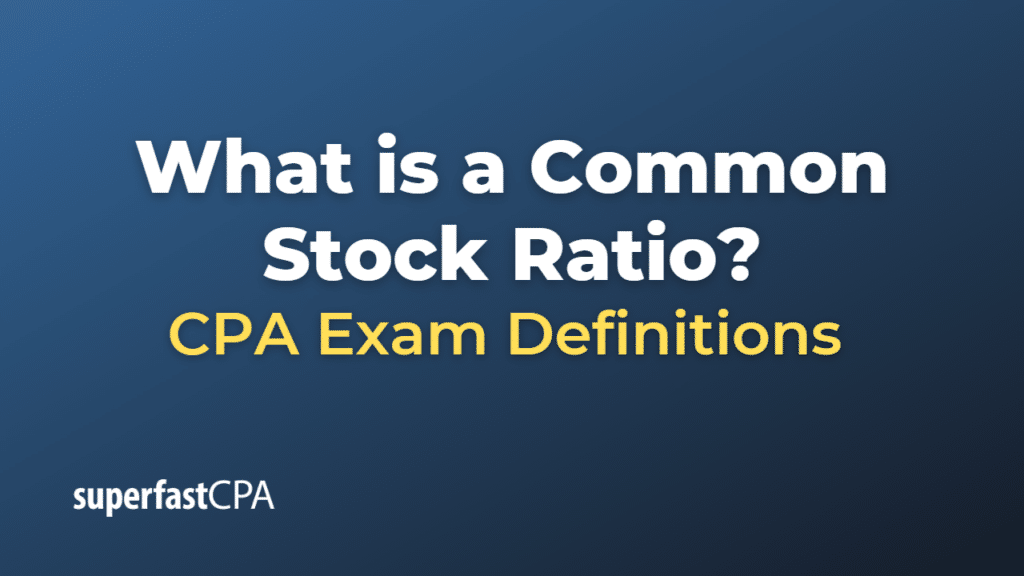Common Stock Ratio
A common stock ratio, also known as the common equity ratio or equity ratio, is a financial metric used to measure the proportion of a company’s total assets that are financed by the shareholders’ equity, specifically common stock. The ratio helps to evaluate the company’s financial leverage and its reliance on equity financing compared to debt financing. A higher common stock ratio indicates that a larger portion of the company’s assets are financed by shareholders’ equity, which usually implies a lower level of financial risk.
The common stock ratio is calculated as follows:
Common Stock Ratio = Common Equity / Total Assets
Here, common equity refers to the shareholders’ equity attributable to the common stockholders, which can be calculated as total shareholders’ equity minus preferred equity (if any). Total assets include all the assets owned by the company, both tangible and intangible.
The common stock ratio provides insights into the company’s capital structure and financial stability. A higher ratio suggests that the company relies more on equity financing and has a lower level of debt, which can be considered a more conservative approach to financing its assets. On the other hand, a lower ratio indicates that the company has a higher proportion of debt financing, which can be riskier, especially during times of financial stress or economic downturns.
It is important to note that the optimal common stock ratio may vary depending on the industry and the specific circumstances of the company. Comparing the common stock ratio of a company with its industry peers can provide a better understanding of its financial position and capital structure relative to its competitors.
Example of a Common Stock Ratio
Let’s consider a hypothetical example to illustrate the concept of the common stock ratio.
Imagine Company ABC has the following financial information from its balance sheet:
- Total Assets: $5,000,000
- Total Shareholders’ Equity: $3,000,000
- Preferred Equity: $500,000
First, we’ll calculate the common equity by subtracting the preferred equity from the total shareholders’ equity:
Common Equity = Total Shareholders’ Equity – Preferred Equity
Common Equity = $3,000,000 – $500,000
Common Equity = $2,500,000
Next, we’ll calculate the common stock ratio:
Common Stock Ratio = Common Equity / Total Assets
Common Stock Ratio = $2,500,000 / $5,000,000
Common Stock Ratio = 0.50 (or 50%)
In this example, Company ABC’s common stock ratio is 50%, which means that 50% of its total assets are financed by common shareholders’ equity. The remaining 50% of the assets are financed by other sources, such as debt and preferred equity.
To better understand Company ABC’s financial position, you could compare its common stock ratio to those of other companies in the same industry or use it alongside other financial ratios, such as debt-to-equity ratio or return on equity. This can provide a more comprehensive view of the company’s capital structure and financial stability, helping investors and analysts make informed decisions about the company’s risk profile and overall financial health.













